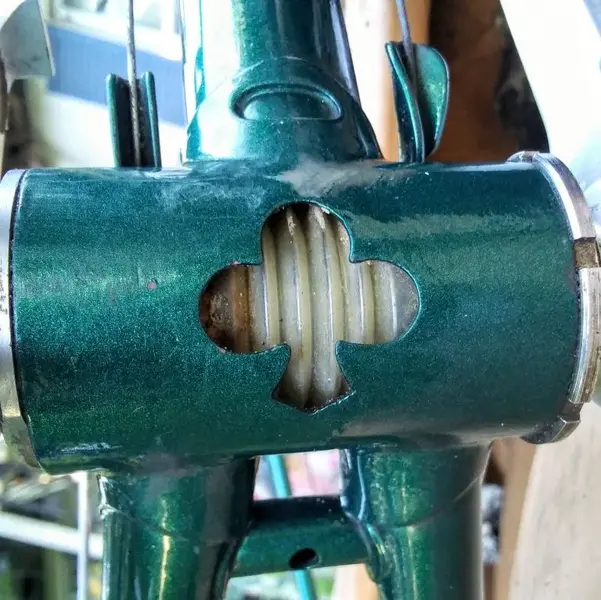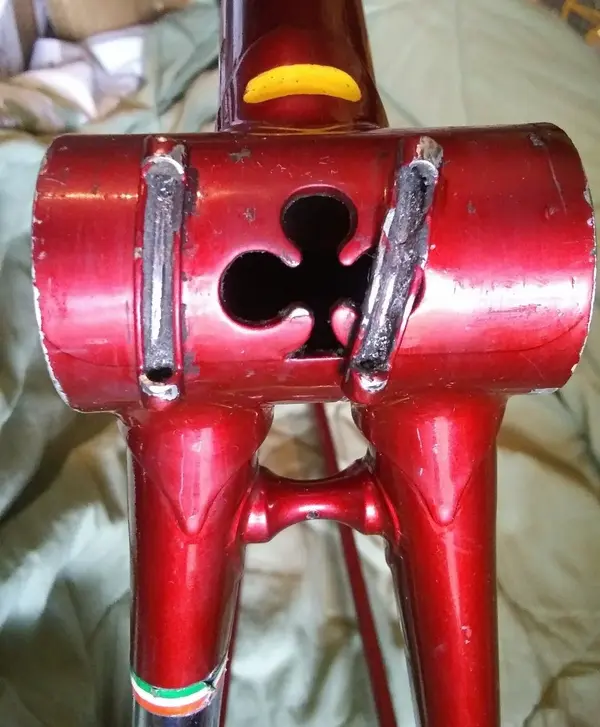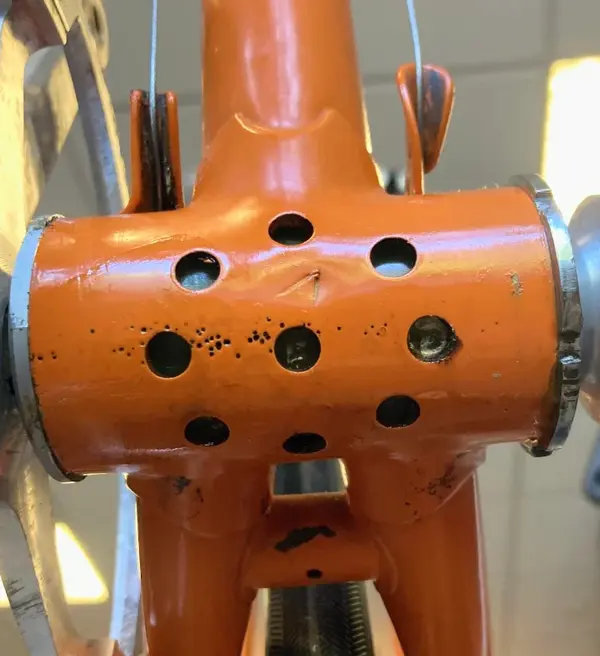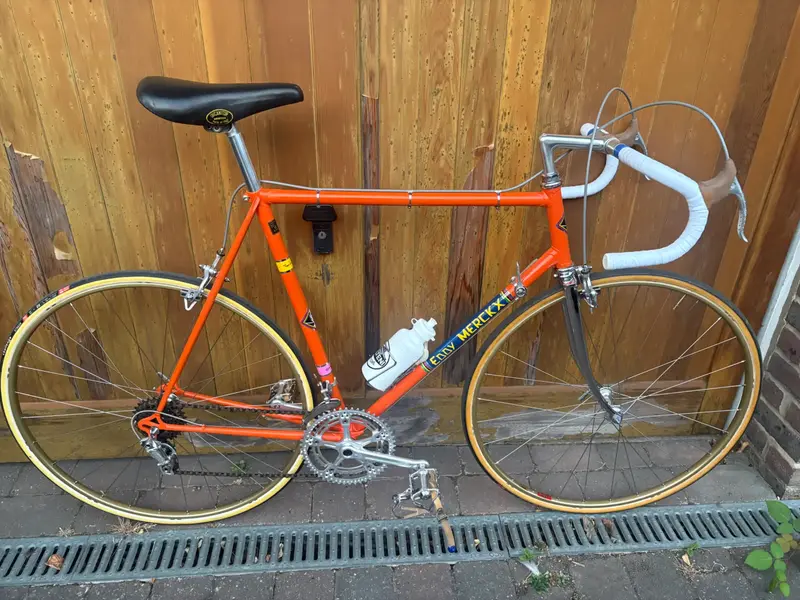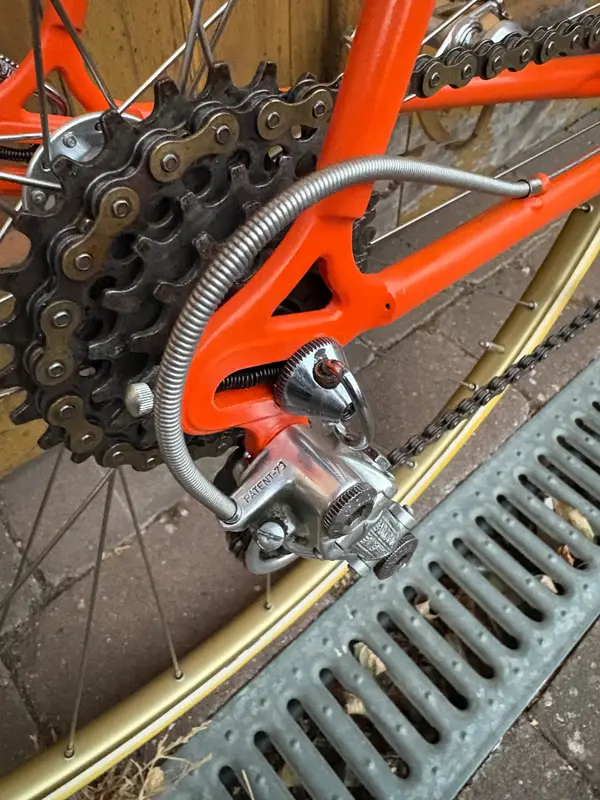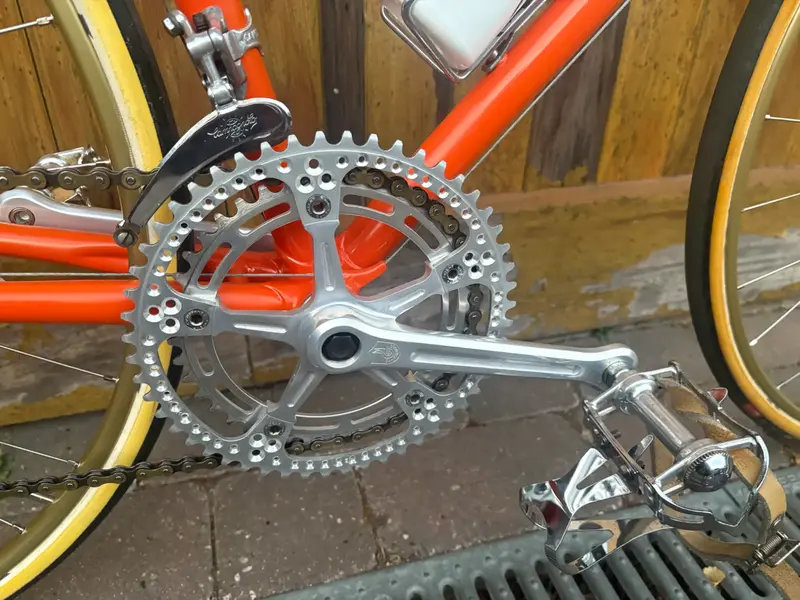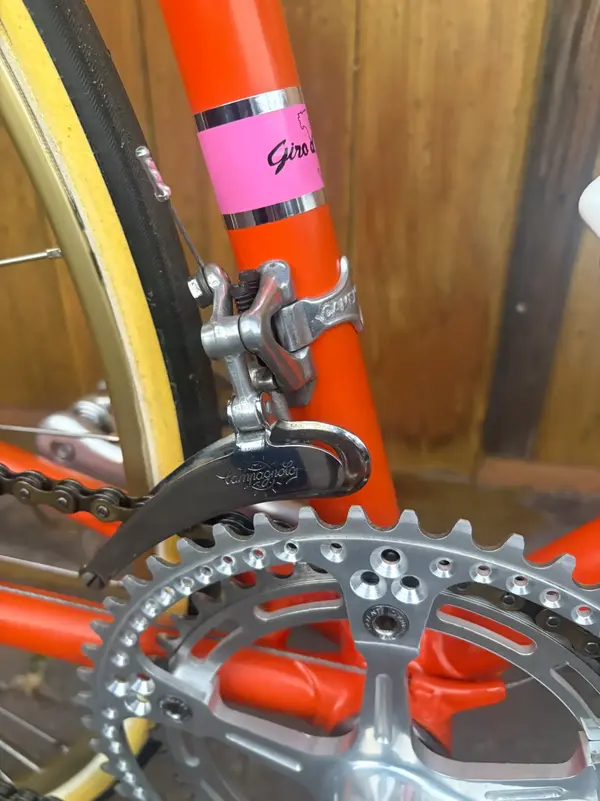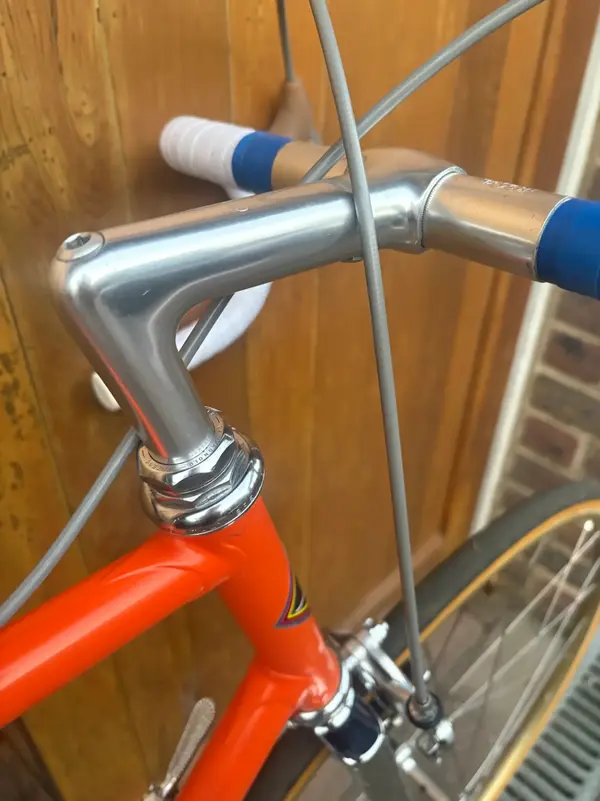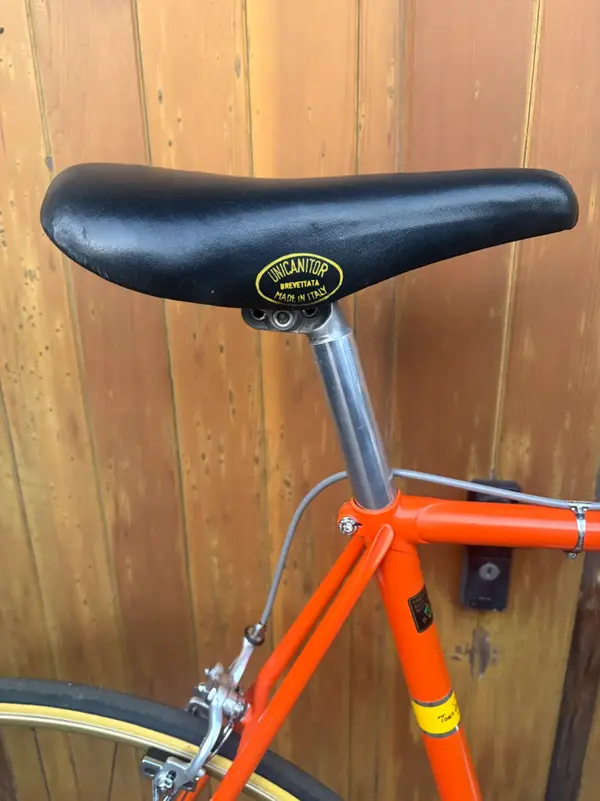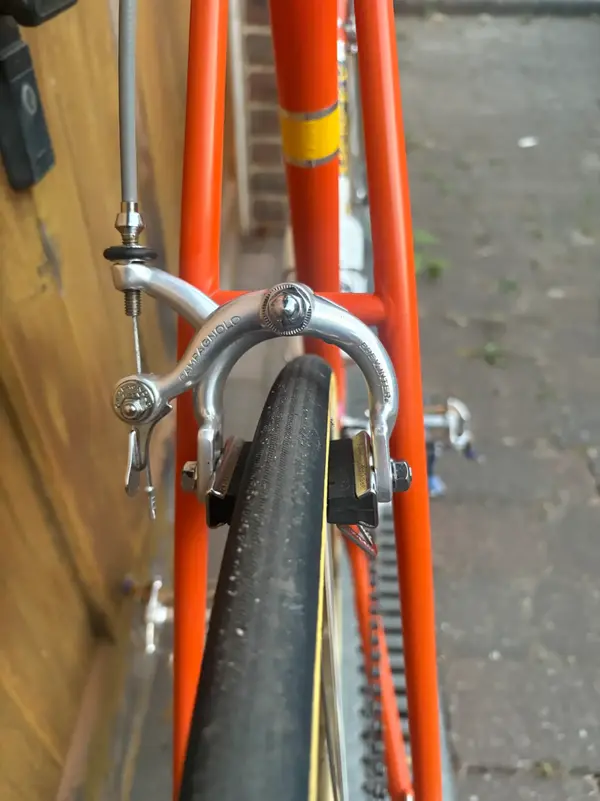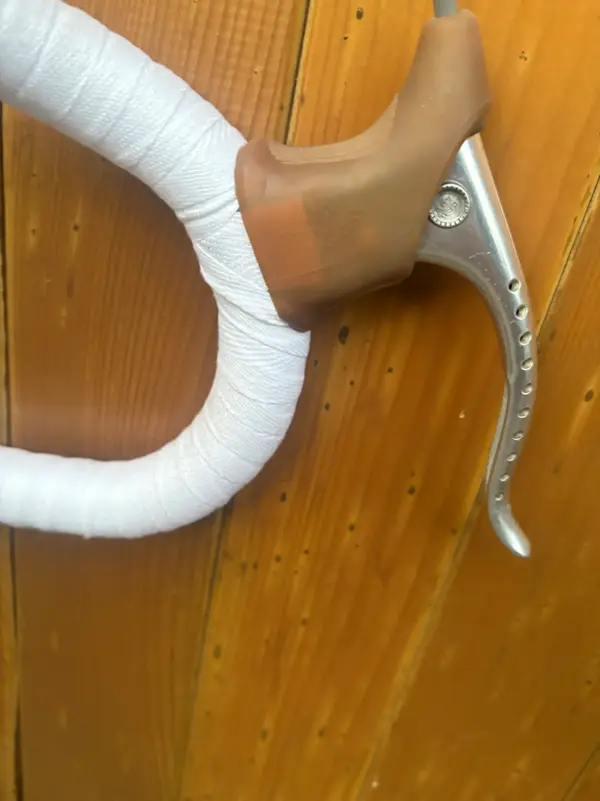D
Deleted member 57380
The BB cut out is common from circa '72 to c. '81. Previous had the 9 holes or very early (Roma?) 1 hole. The only 9dd thig I see is the lack of lug cut-outs. That could be for various reasons (cost, time, requested, etc.) Tthat probably only the builder knew. I have seen a frame without them before and it was original paint; but no indication of it being a team bike (I think it was on its 2nd owner when seen; neither were pro racers). I hope the markings prove to he informative.
Understand that anyone could order a custom frame, whether in size or details (braze-ons, chrome, paint, tubing type, etc.). I find it incredible that Colnago has any records left of that era (maybe for major teams only).. They had enough trouble producing error free catalogs.
Not all "stock" production frames were identical within a given model year. Colnago used various contract builders also. Rauler started building for Colnago c. '73-'74 and were building frames without cut-out lugs to be sold by dealers with their own decals (BB shells still had c-o's; but as you can see it does not even come close to matching their logo.
That BB shell (with pointed rear nozzles) was still being used in the early to mid '80s and is not really an identifier of year as there was no consistency.
Understand that anyone could order a custom frame, whether in size or details (braze-ons, chrome, paint, tubing type, etc.). I find it incredible that Colnago has any records left of that era (maybe for major teams only).. They had enough trouble producing error free catalogs.
Not all "stock" production frames were identical within a given model year. Colnago used various contract builders also. Rauler started building for Colnago c. '73-'74 and were building frames without cut-out lugs to be sold by dealers with their own decals (BB shells still had c-o's; but as you can see it does not even come close to matching their logo.
That BB shell (with pointed rear nozzles) was still being used in the early to mid '80s and is not really an identifier of year as there was no consistency.
Attachments
Last edited by a moderator:
